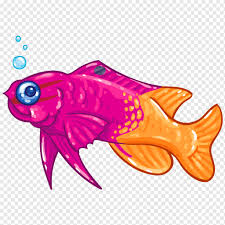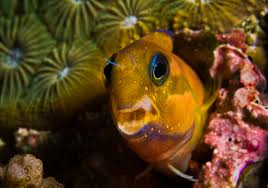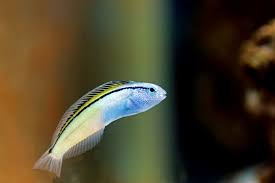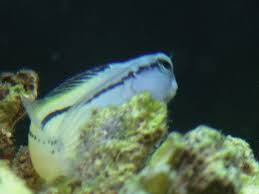
Dragons, with their rich symbolism and striking imagery, have long been subjects of artistic representation. While many traditional artworks depict dragons in a realistic or symbolic manner, abstract art offers a unique approach to the mythical creature. Abstract paintings allow artists to deconstruct the traditional form of the dragon and reimagine it in bold, conceptual ways. This article explores how dragons are represented in abstract art, the techniques used to create these representations, and the deeper meanings behind these artistic interpretations.
1. The Symbolism of Dragons in Art
Before diving into the specifics of abstract dragon representations, it’s essential to understand the significance of dragons in art and culture. Across various traditions, dragons are seen as powerful symbols. They represent:
- Strength and Power: In both Eastern and Western cultures, dragons are often viewed as symbols of strength, courage, and unyielding power.
- Protection and Guardianship: Dragons are frequently depicted as guardians of treasures or sacred places, offering protection and safeguarding the unknown.
- Wisdom and Knowledge: Especially in Eastern cultures, dragons are often associated with wisdom, divine knowledge, and the protection of sacred knowledge.
- Transformation and Change: The dragon’s ability to transcend different elements – fire, water, air, and earth – embodies transformation and metamorphosis.
- Spirituality: In many cultures, dragons symbolize the connection between the material world and the spiritual realms, bridging the gap between heaven and earth.
These symbolic meanings provide fertile ground for artists, especially those in abstract genres, to explore new ways of representing dragons.
2. Abstract Art: A Brief Overview
Abstract art is characterized by its departure from the realistic representation of objects. Instead of depicting tangible forms and figures, abstract artists focus on shapes, colors, lines, and textures to convey emotion, energy, or conceptual ideas. In abstract art, the viewer is invited to engage in a more subjective interpretation of the work, with the absence of clear, defined shapes or recognizable figures.
When it comes to abstract representations of dragons, artists often use these qualities to convey the essence of the mythical creature without adhering to traditional, literal depictions.
3. Approaching Dragon Imagery Through Abstraction
In abstract art, the dragon is often depicted not as a literal creature but as a collection of energy, form, and movement. Artists may break the dragon down into symbolic elements such as its serpentine body, its fiery breath, its fierce eyes, or its mighty claws. Each of these components can be abstracted into shapes, lines, or textures that evoke the creature’s power and mysticism.
Fluidity and Motion:
Dragons are often depicted as fluid, sinuous beings in Eastern culture, particularly in Chinese and Japanese art. Abstract representations of dragons may emphasize the flowing motion of the dragon’s body through curved lines, spirals, or fluid brushstrokes that evoke a sense of graceful movement. The swirling patterns might represent the dragon’s flight or its energy, drawing the viewer’s attention to the dragon’s continuous flow and power.
Geometric Shapes and Symmetry:
On the other hand, abstract dragon representations might use rigid, geometric shapes to reflect the creature’s imposing strength. The artist might depict a dragon using sharp, angular lines or triangular forms to suggest the fierce, almost mechanical power of the creature. Geometric abstraction may be used to break down the dragon into its fundamental components, such as scales, claws, or wings, rearranged in a way that captures the essence of the beast without explicitly illustrating it.
Color as Symbolism:
The colors used in abstract dragon paintings often play a critical role in conveying the symbolism associated with dragons. Red and gold are common colors associated with dragons, especially in Chinese culture, where they symbolize good fortune, wealth, and power. Blue and green tones might be used to represent the spiritual and ethereal qualities of the dragon, reflecting its connection to the elements of water and air.
Artists may use color to evoke the dragon’s fiery nature (warm tones like reds, oranges, and yellows) or its more serene and majestic attributes (cool blues, greens, and silvers). The choice of color palette allows the artist to enhance the emotional impact of the abstract dragon depiction.
4. Techniques for Abstract Dragon Representation
Creating an abstract painting of a dragon involves a range of artistic techniques, from the use of color to the application of texture. Some common methods include:
Brushstrokes and Movement:
The way a brushstroke is applied can convey the fluidity and power of the dragon. For example, loose, sweeping brushstrokes may suggest the dragon’s fiery breath or the fluidity of its movement. On the other hand, more controlled, deliberate brushstrokes might capture the sharpness and power of the dragon’s claws or the fierceness of its gaze.
Layering and Texture:
Layering is a technique used in abstract art where colors and shapes are built up over time to create depth and texture. In an abstract dragon painting, layering can be used to mimic the dragon’s scales or the intricate details of its form. For example, textured materials such as impasto or sand can add a tactile dimension to the artwork, evoking the roughness of the dragon’s hide or the energy emanating from its presence.
Contrast and Composition:
Abstract artists often use contrast to emphasize specific elements of their work. In the case of dragons, contrast between light and dark can evoke the battle between light and shadow, mirroring the dragon’s dual nature as both a destroyer and a protector. The composition might be deliberately chaotic, reflecting the untamed power of the dragon, or it could be more harmonious, symbolizing the balance between its destructive and protective qualities.
5. Meaning and Interpretation of Abstract Dragon Paintings
Unlike traditional depictions, abstract representations of dragons do not have fixed meanings. Instead, they encourage the viewer to engage in a more personal interpretation of the work. For instance:
- A fluid, sweeping brushstroke might represent the dragon’s connection to water and air, its power in the sky.
- Geometric shapes might focus on the precision and control of the dragon’s force, highlighting its role as a guardian.
- Bold splashes of color can symbolize the intense energy and fire that dragons are often associated with, creating a visceral experience for the viewer.
The abstract nature of the painting allows for a deeper connection to the mythical creature, as the viewer is invited to interpret the piece based on their own emotions, experiences, and associations with dragons.
6. Notable Abstract Artists Who Have Explored Dragon Imagery
Some contemporary and modern abstract artists have experimented with dragon imagery in their work, drawing from both Western and Eastern traditions to create unique representations of the mythical creature.
Wassily Kandinsky:
Known for his exploration of abstract shapes and colors, Kandinsky’s work often incorporated spiritual themes. Though not specifically focused on dragons, his use of fluid, organic forms in his paintings resonates with the idea of dragons as flowing, ethereal beings.
Zao Wou-Ki:
A French-Chinese abstract artist, Zao’s work often reflected Eastern spiritual themes, including the concept of dragons. His large-scale paintings, which combine both abstraction and Chinese influences, evoke the energy and mystical power of dragons in an abstract form.
Yu Hong:
A contemporary Chinese artist, Yu Hong blends traditional Chinese symbolism with modern abstract techniques in her work. Her dragon-themed paintings often feature dynamic compositions and a mix of colors that create a sense of movement and energy.
7. The Influence of Abstract Dragons on Contemporary Art and Culture
The use of dragon imagery in abstract art continues to evolve, influencing both contemporary art and popular culture. The mythical creature’s transformation into an abstract form reflects our evolving understanding of tradition and modernity. Abstract dragons are now found in many aspects of contemporary life, from street art and installations to commercial design and fashion.
The abstraction of dragons in art also mirrors our modern relationship with myth. While we no longer believe in dragons as literal creatures, we continue to be fascinated by their symbolic power and the potential for creative expression they represent.
Conclusion
Dragons, as ancient and multifaceted symbols, hold a deep and enduring significance in global cultures. In the realm of abstract art, artists have the freedom to explore these creatures in new and imaginative ways, breaking away from the constraints of traditional depictions. Through fluid lines, geometric forms, rich color palettes, and innovative techniques, abstract representations of dragons capture the creature’s essence, power, and mystery. Whether as expressions of personal transformation, guardianship, or mystical energy, abstract dragon paintings continue to captivate and inspire viewers, inviting them to engage with a mythical creature in a deeply personal and reflective manner.










